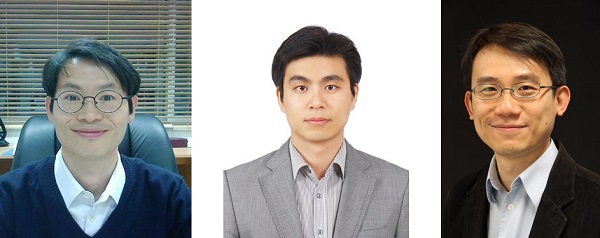Media Center
A multimedia mosaic of moments at GIST
GIST Excellence
[Press Release] Joint research between GIST Professor Euiheon Chung and Caltech Professor Changhuei Yang has developed a novel holographic focusing method
- 엘리스 리
- REG_DATE : 2016.05.27
- HIT : 908
Joint research between GIST Professor
Euiheon Chung and Caltech Professor Changhuei Yang has developed a novel
holographic focusing method

Figure 1. Simultaneous generation of arbitrary patterns at
different focal lengths
Focusing light is usually achieved with a lens or curved
mirror that has a fixed focal length. However, variable light focusing allows
the focal distance of a lens to be changed, and this is an important capability
to have when optically interrogating a three-dimensional object. There are
various approaches to achieve variable light focusing, such as zoom lenses or
liquid-crystal lenses, but these are not adequate for microscale applications.
To overcome this limitation, a joint research team from the
California Institute of Technology (Caltech) under Professor Changhuei Yang and
the Gwangju Institute of Science and Technology (GIST) under Professor Euiheon
Chung of the Department of Biomedical Science and Engineering have developed a holographic focusing method that enables variable light
focusing without any physical modification to the lens element.
The researchers used an optical phase conjugation assisted
scattering lens that generated a micron-sized focal spot over a wide range of
focal distances. An advantage of this approach is that it can create multiple
foci simultaneously or sequentially.
Their paper entitled "Optical phase conjugation-assisted
scattering lens: variable focusing and 3D patterning" was published on
April 6, 2016, in Scientific Reports and was authored by Jihee Ryu, Mooseok
Jang, Tae Joong Eom, Changhuei Yang, and Euiheon Chung.

Professor Euiheon Chung noted, "The optical phase
conjugation-assisted scattering lens provides great flexibility for
variable-light focusing and light patterning, and can be used for a broad range
of applications. In addition to its applications in imaging, the scattering
lens can be a powerful tool for manipulating particles and activating
biomolecules or materials. For example, it can be combined with optogenetics
technology for interrogating three-dimensional neural networks at cellular
resolution."